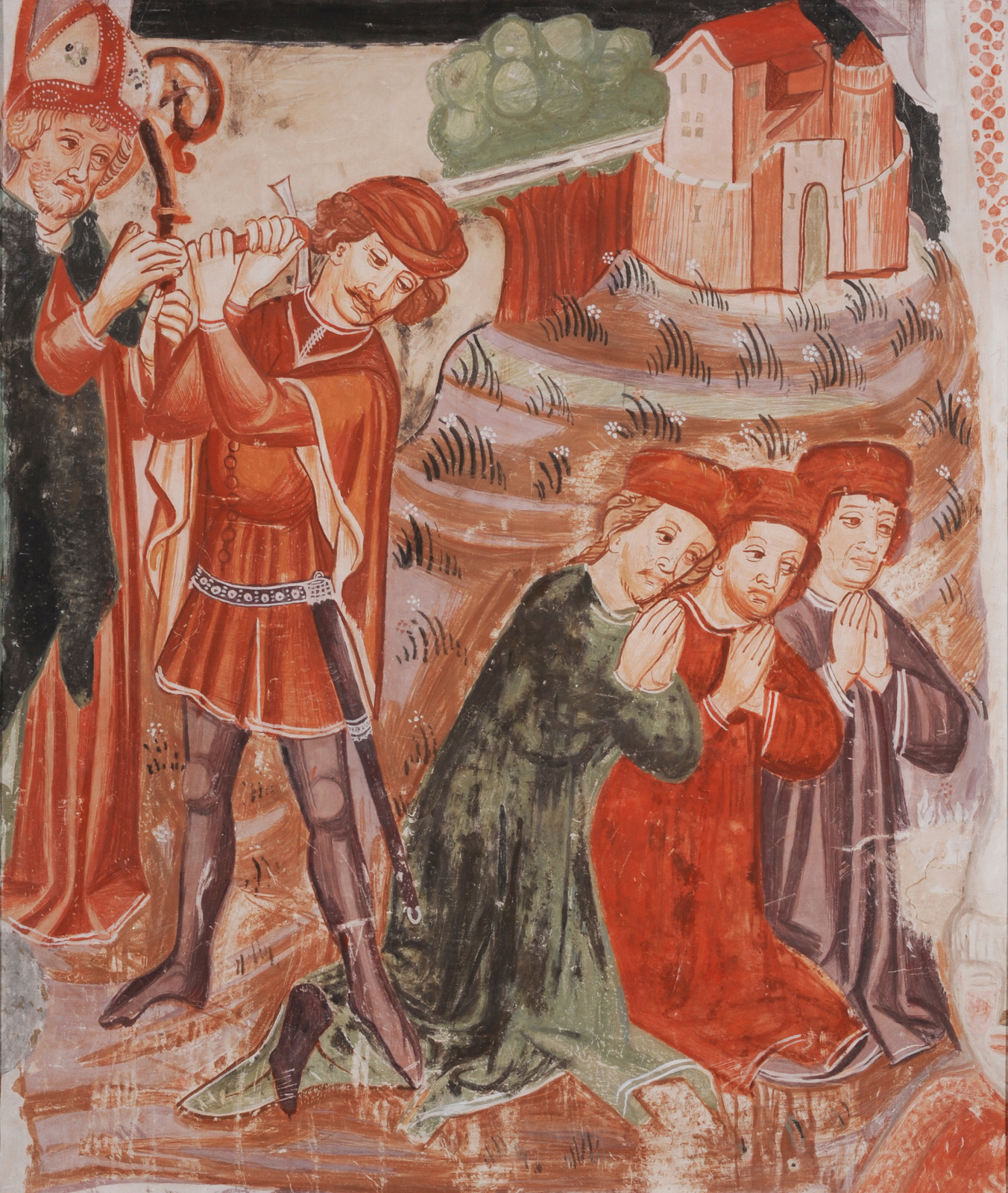Johannes Of Ljubljana on:
[Wikipedia]
[Google]
[Amazon]
 Johannes of Ljubljana ( la, Johannes de Laybaco, Slovenized as ''Janez Ljubljanski''), was a painter active between 1433 and 1460.
Johannes of Ljubljana ( la, Johannes de Laybaco, Slovenized as ''Janez Ljubljanski''), was a painter active between 1433 and 1460.
 Johannes of Ljubljana ( la, Johannes de Laybaco, Slovenized as ''Janez Ljubljanski''), was a painter active between 1433 and 1460.
Johannes of Ljubljana ( la, Johannes de Laybaco, Slovenized as ''Janez Ljubljanski''), was a painter active between 1433 and 1460.
Life and work
Johannes was the son of Frederic of Villach, and he became a citizen of the town ofLjubljana
Ljubljana (also known by other historical names) is the capital and largest city of Slovenia. It is the country's cultural, educational, economic, political and administrative center.
During antiquity, a Roman city called Emona stood in the ar ...
around 1440. He initially worked in his father's workshop in Carinthia
Carinthia (german: KûÊrnten ; sl, KoroéÀka ) is the southernmost States of Austria, Austrian state, in the Eastern Alps, and is noted for its mountains and lakes. The main language is German language, German. Its regional dialects belong to t ...
, where he created his first independent works. He is believed to have had close contact with the Cistercians
The Cistercians, () officially the Order of Cistercians ( la, (Sacer) Ordo Cisterciensis, abbreviated as OCist or SOCist), are a Catholic religious order of monks and nuns that branched off from the Benedictines and follow the Rule of Saint ...
, and in Carniola
Carniola ( sl, Kranjska; , german: Krain; it, Carniola; hu, Krajna) is a historical region that comprised parts of present-day Slovenia. Although as a whole it does not exist anymore, Slovenes living within the former borders of the region sti ...
he worked on commissions from Stiána Abbey
Stiána Abbey ( sl, Cistercijanska opatija Stiána, also ; german: Kloster Sittich, Latin: ''Sitticum'') is the oldest monastery in Slovenia. It is the only Cistercian monastery in the country still operating (the other was Kostanjevica Abbey in ...
. His bet-known signed and dated frescoes are in the Gothic Saint Nicholas's Church in Visoko
Visoko ( sr-cyrl, ÅÅ¡îŃŤŃ, ) is a city located in the Zenica-Doboj Canton of the Federation of Bosnia and Herzegovina, an entity of Bosnia and Herzegovina. As of 2013, the municipality had a population of 39,938 inhabitants with 11,205 livi ...
(1443) and in Muljava
Muljava (; german: Mulau''Leksikon obáin kraljestev in deéƒel zastopanih v dréƒavnem zboru,'' vol. 6: ''Kranjsko''. 1906. Vienna: C. Kr. Dvorna in Dréƒavna Tiskarna, p. 100.) is a village in the Municipality of Ivanána Gorica in central Slovenia. ...
(1456). A work of his bearing only a date (1459) is found in Saint Peter's Church in Kamni Vrh pri Ambrusu. His independent works also include paintings at the monastery in Stiána
Stiána (; in older sources also ''Zatiáina'',''Leksikon obáin kraljestev in deéƒel zastopanih v dréƒavnem zboru,'' vol. 6: ''Kranjsko''. 1906. Vienna: C. Kr. Dvorna in Dréƒavna Tiskarna, pp. 102ã103. german: Sittich) is a village in the Munic ...
and at the churches in Metnaj and Maákovec pri Dvoru, and together with painters from his workshop he also created works in TroéÀáine and at Saint Nicholas's Chapel of Ease in é§uéƒemberk
é§uéƒemberk (; german: Seisenberg), is a town located southeast of the Slovenian capital of Ljubljana. It is the seat of the Municipality of é§uéƒemberk. The area is part of the historical region of Lower Carniola. The municipality is now includ ...
. Products of his workshop are also considered the frescoes in MengeéÀ
MengeéÀ (; german: Mannsburg''Leksikon obáin kraljestev in deéƒel zastopanih v dréƒavnem zboru,'' vol. 6: ''Kranjsko''. 1906. Vienna: C. Kr. Dvorna in Dréƒavna Tiskarna, p. 28.) is a settlement in the Upper Carniola region of Slovenia. It is the ...
and the pilgrimage church dedicated to the Annunciation
The Annunciation (from Latin '), also referred to as the Annunciation to the Blessed Virgin Mary, the Annunciation of Our Lady, or the Annunciation of the Lord, is the Christian celebration of the biblical tale of the announcement by the ange ...
in Crngrob
Crngrob (; german: Ehrengruben''Leksikon obáin kraljestev in deéƒel zastopanih v dréƒavnem zboru,'' vol. 6: ''Kranjsko''. 1906. Vienna: C. Kr. Dvorna in Dréƒavna Tiskarna, p. 62.) is a small village in the Municipality of é kofja Loka in the Upper ...
, where he painted ''Holy Sunday'' around 1460.
Johannes brought a late soft style of painting to Carniola from Carinthia, pervaded by Bohemian and Italian influences. His works are characterized by the skill of his workshop, their colorful plastic modeling, idealized calm, and the beauty of the figures. With regard to his iconography, his work shows some adaptation to the painting style common to Carniolan chancels.
References
{{Authority control Carniolan painters Year of birth unknown Year of death unknown 15th-century painters